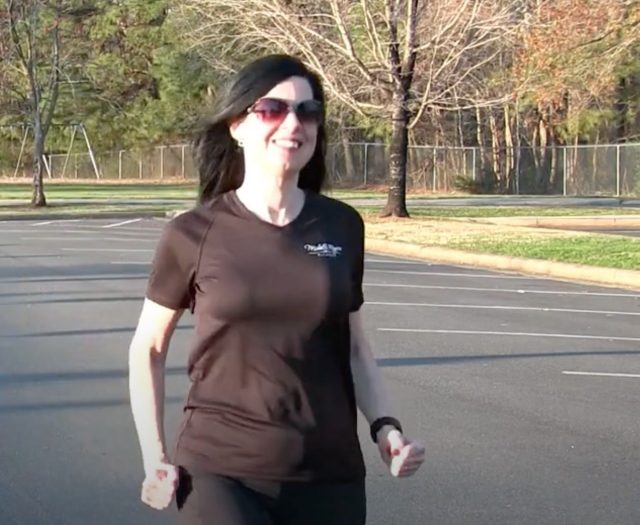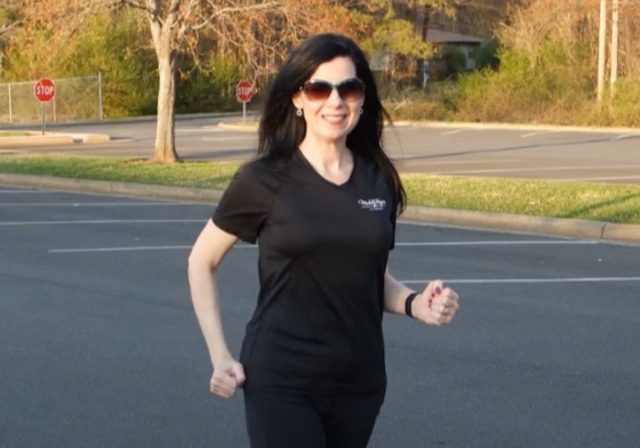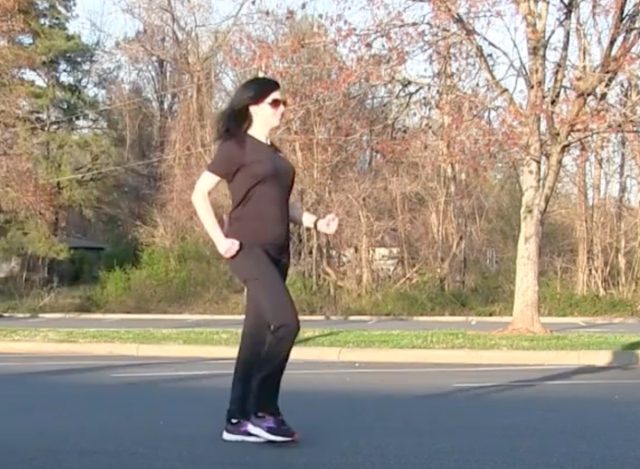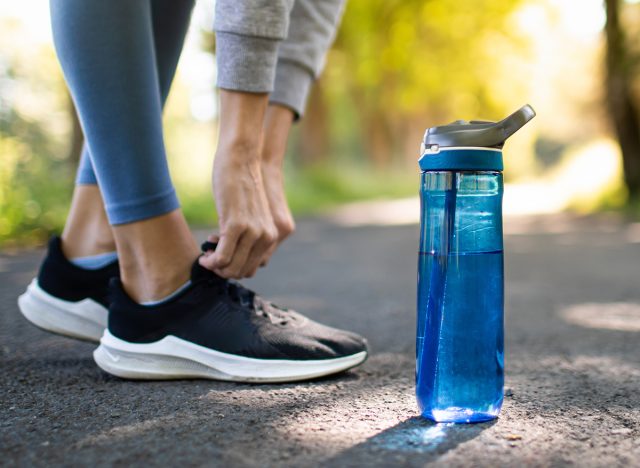The Daily Walking Plan That Helped Me Shed 60 Pounds
Certified personal trainer Michelle Rogers knows first-hand how challenging weight loss can be—but has the definite advantage of having successfully managed it herself. Rogers lost 60 pounds just by walking every day and by sticking to concrete goals and behaviors that set her up for success. "One day I'd had enough. I was sick and tired of feeling sick and tired. I knew I needed to get my body moving to try to alleviate the stiffness and tiredness," she said via Blue Cross NC. Here's exactly how Rogers did it.
Start Small, But Steady

Rogers made a goal to walk for just 15 minutes every day. The more she walked, the better she felt. "Walking is great aerobic exercise. It is considered weight bearing, which is good for your bone strength and health," Brenda Husemann, ARNP, tells UnityPoint Health. "I tell people the overall act of adding a short walk or a few thousand extra steps a day can lower their blood pressure, lower the risk of cardiovascular disease, elevate their mood, and support overall health."
Better Food Choices

As she felt better and better with her walks, Rogers started to pay attention to her diet, too. She didn't go on any restrictive plans—instead, she focused on nutritious food that made her feel good. "Use a written journal or a food and activity app to track your calories and exercise, so that you are mindful of how much you are eating, drinking and moving," she advises.
RELATED: 15 Quick Ways to Lose Body Fat Percentage in a Week
Make Time Every Day

Rogers would take her walk at the same time every day, building consistent habits that soon became second nature. For Rogers, that meant walking before the workday started as she would be too tired by the end. Pick a time that's convenient and easy to stick to.
Pick Up the Pace

As Rogers became more comfortable walking, she started picking up the pace. The trainer began walking faster and adding dance steps while listening to music. "For a person with excellent fitness, an approximate moderate walking pace is 15 minutes per mile (4 miles per hour), says the British Heart Foundation.
At Least 30 Minutes a Day

Rogers recommends walking for 30-60 minutes a day. "Even brief bouts of activity offer benefits," Edward R. Laskowski, MD, tells the Mayo Clinic. "For instance, if you can't fit in one 30-minute walk during the day, try a few five-minute walks instead. Any activity is better than none at all."
Drink Water

Rogers made a point to drink plenty of water, not sodas or sugary drinks. "You should try to consume 4 to 8 ounces of fluid every 15 to 20 minutes during exercise," Sarah Eby, MD, PhD, tells Mass General Brigham. "If you are participating in moderate activity in a climate that isn't very warm, you may be able to consume the lower end of that spectrum — 4 ounces every 20 minutes. High-intensity exercise in the heat might require the higher end of that spectrum — 8 ounces every 15 minutes."
RELATED: 7 Insider Secrets from Personal Trainers for Optimal Fitness
Realistic Goals

Rogers says to be realistic about how fast the weight might come off—it took her a year. The most important factor is consistency. "It takes time and effort to build new habits, adjust to healthier ways of eating, and for your body to burn the extra fat it's stored," she says.
💪🔥 Body Booster: Walking is simple but effective. Make small goals and build on that foundation.





